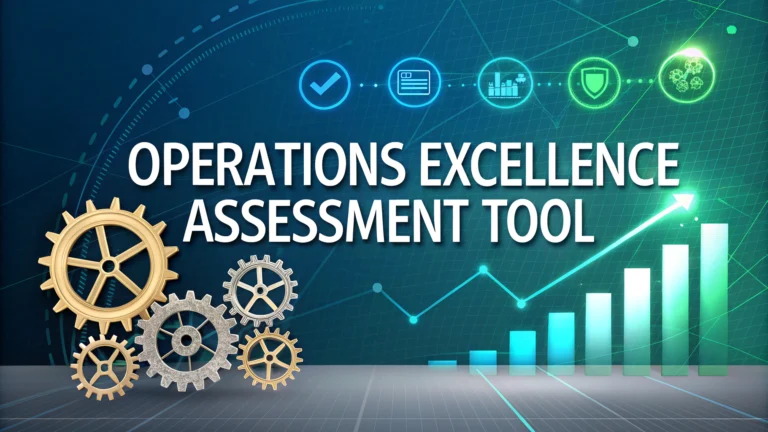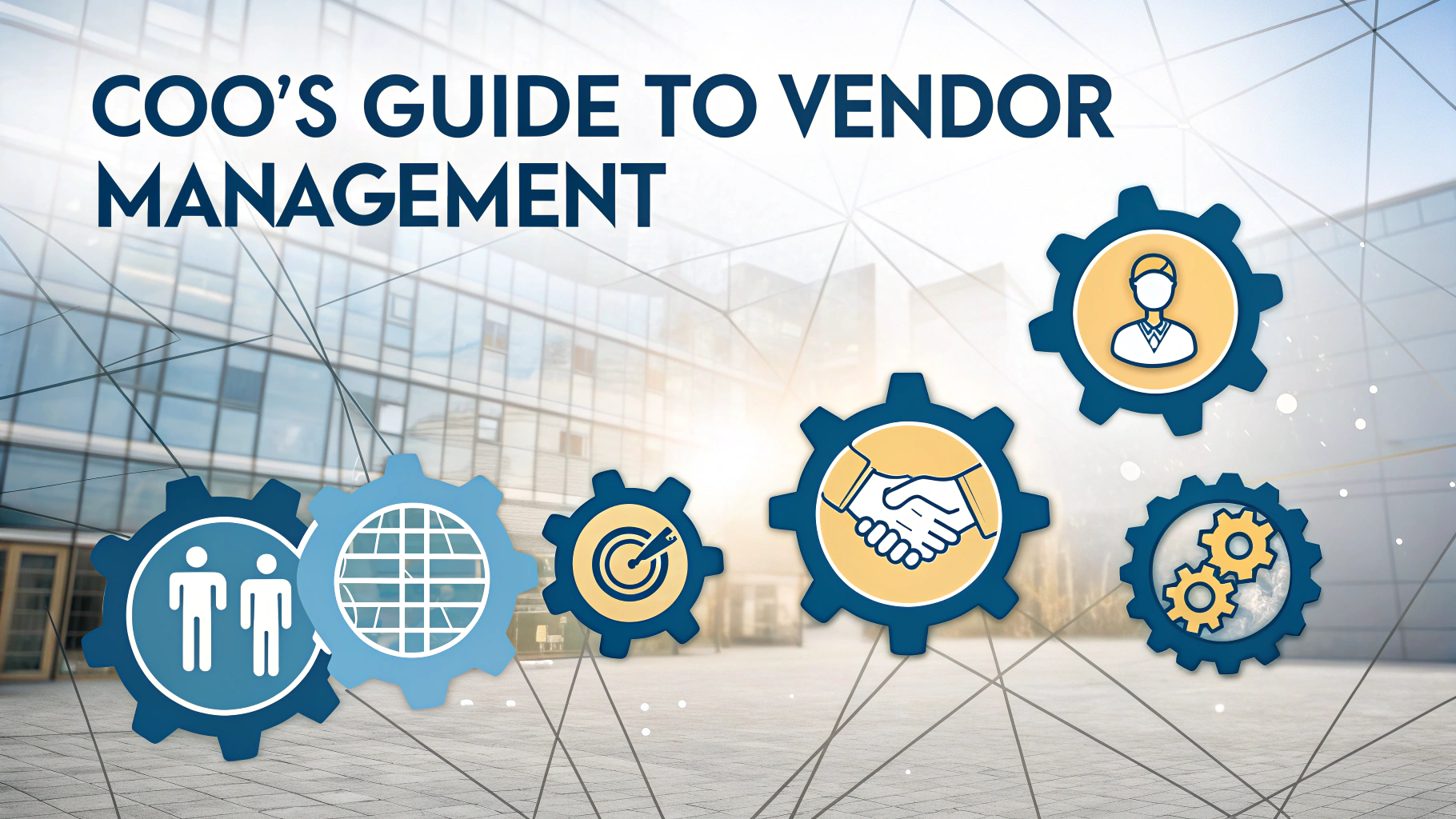The Operations Excellence Assessment Tool helps organizations identify gaps, strengths, and opportunities for improvement in their operational processes.
This practical guide explores how COOs and operational leaders can leverage assessment tools to drive performance improvements and strategic decision-making.
Learn how to select, implement, and maximize the value of operations assessment tools to transform your organization’s operational capabilities.
Key Components of Operations Excellence Assessment
- Process efficiency evaluation
- Resource utilization metrics
- Quality management systems
- Employee productivity measures
- Cost optimization analysis
- Technology integration assessment
Assessment Areas and Metrics
| Area | Key Metrics |
|---|---|
| Operational Efficiency | Cycle time, throughput, capacity utilization |
| Quality Management | Defect rates, customer satisfaction, compliance rates |
| Resource Management | Labor productivity, equipment effectiveness, inventory turnover |
Implementation Steps
- Preparation Phase
- Define assessment scope
- Select evaluation criteria
- Assemble assessment team
- Data Collection
- Gather operational metrics
- Conduct stakeholder interviews
- Review existing documentation
- Analysis
- Identify performance gaps
- Benchmark against industry standards
- Prioritize improvement areas
Tool Selection Guidelines
Select assessment tools that align with your organization’s size, industry, and specific operational challenges.
- Small Organizations: Basic assessment templates, spreadsheet-based tools
- Medium Organizations: Customized assessment software, industry-specific tools
- Large Organizations: Enterprise-grade assessment platforms, integrated management systems
Best Practices for Assessment Success
- Establish clear assessment objectives and timelines
- Ensure consistent measurement methodologies
- Involve key stakeholders throughout the process
- Document findings and recommendations thoroughly
- Create actionable improvement plans
Common Assessment Pitfalls to Avoid
- Collecting data without clear purpose
- Overlooking employee feedback
- Focusing solely on quantitative metrics
- Neglecting follow-up assessments
Taking Action on Assessment Results
Transform assessment findings into actionable improvements through these steps:
- Prioritize opportunities based on impact and feasibility
- Develop detailed implementation plans
- Assign responsibilities and deadlines
- Monitor progress and adjust as needed
Resources and Support
Contact these organizations for additional guidance and tools:
- American Society for Quality (ASQ): www.asq.org
- Institute for Operations Research and Management Sciences: www.informs.org
- Association for Supply Chain Management: www.ascm.org
Change Management and Communication
Successful implementation of assessment findings requires strong change management and communication strategies. Leaders must:
- Create a compelling vision for operational excellence
- Develop clear communication channels
- Address resistance to change proactively
- Celebrate early wins and milestones
- Maintain momentum through regular updates
Continuous Improvement Cycle
Regular Assessment Schedule
- Quarterly performance reviews
- Annual comprehensive assessments
- Monthly progress tracking
Feedback Integration
- Employee suggestions program
- Customer feedback analysis
- Stakeholder input sessions
Technology and Data Analytics
Leverage advanced tools to enhance assessment effectiveness:
- Predictive analytics platforms
- Real-time performance dashboards
- Automated data collection systems
- Machine learning algorithms for pattern recognition
Building Sustainable Excellence
Transform operations excellence from a project into an organizational capability through:
- Embedding assessment practices into daily operations
- Developing internal assessment expertise
- Creating a culture of continuous improvement
- Establishing sustainable measurement systems
- Linking operational excellence to strategic objectives
FAQs
- What is an Operations Excellence Assessment Tool?
An Operations Excellence Assessment Tool is a systematic framework used to evaluate and measure an organization’s operational performance, efficiency, and maturity across various business processes, systems, and practices. - What key areas does an Operations Excellence Assessment typically evaluate?
The assessment typically evaluates process standardization, quality management, resource utilization, continuous improvement initiatives, leadership effectiveness, employee engagement, technology integration, and performance metrics. - How often should an Operations Excellence Assessment be conducted?
Organizations should conduct comprehensive assessments annually, with quarterly progress reviews to track improvement initiatives and maintain momentum in operational excellence programs. - What are the main benefits of using an Operations Excellence Assessment Tool?
Benefits include identifying operational gaps, benchmarking against industry standards, prioritizing improvement initiatives, optimizing resource allocation, reducing operational costs, and enhancing overall organizational performance. - Who should be involved in the Operations Excellence Assessment process?
The assessment should involve key stakeholders including the COO, department heads, process owners, frontline managers, and relevant team members who can provide accurate insights into operational processes. - What metrics are typically measured in an Operations Excellence Assessment?
Key metrics include operational efficiency, cycle time, defect rates, customer satisfaction scores, employee productivity, cost per unit, resource utilization rates, and process compliance levels. - How does an Operations Excellence Assessment Tool support the COO’s role?
The tool provides COOs with data-driven insights for strategic decision-making, helps prioritize improvement initiatives, validates operational strategies, and measures the effectiveness of implemented changes. - What makes an Operations Excellence Assessment Tool effective?
An effective tool should be comprehensive yet practical, aligned with organizational goals, scalable across different departments, provide quantifiable metrics, and enable actionable insights for improvement. - What are the common challenges in implementing an Operations Excellence Assessment?
Common challenges include resistance to change, data accuracy issues, resource constraints, maintaining consistency across departments, and ensuring proper follow-through on improvement recommendations. - How can organizations ensure successful implementation of assessment findings?
Success requires clear communication of findings, development of actionable improvement plans, assignment of responsibilities, establishment of timelines, regular progress monitoring, and sustained leadership support.







